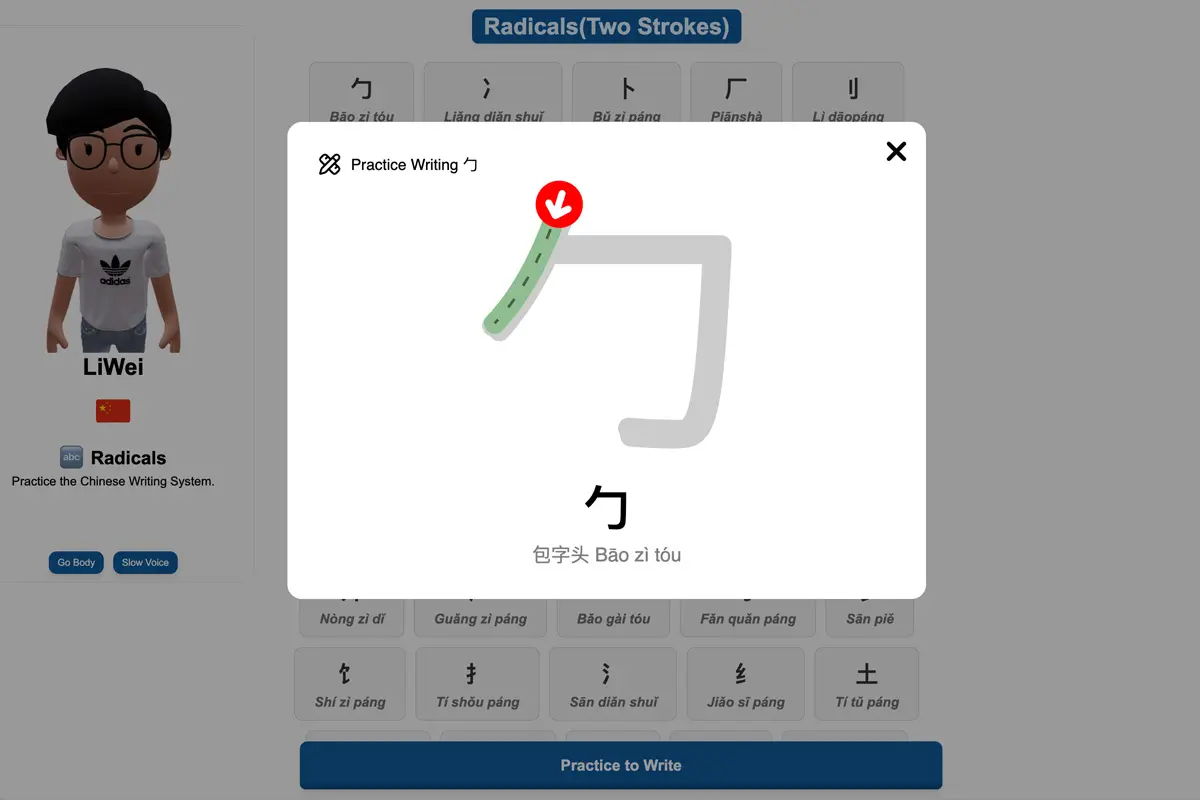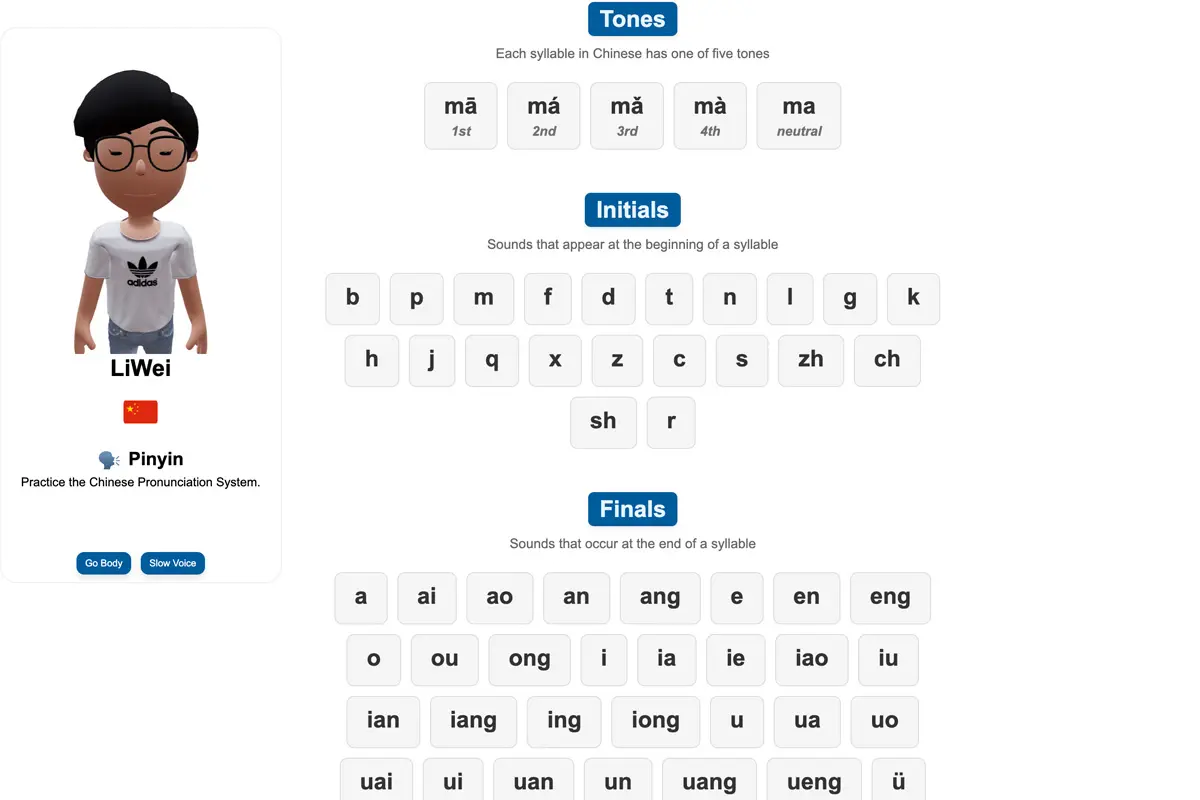
Chinese characters can feel like a wall of mysterious symbols. But with the help of AI, that wall is becoming a doorway.
Why Learn Chinese Characters (Hanzi) Today?
Learning Chinese characters has always been one of the most daunting aspects of studying Mandarin. With over 50,000 characters (though only ~3,000 are commonly used), traditional memorization methods often leave learners overwhelmed.
But now, thanks to powerful AI Chinese characters tools, learning Hanzi is faster, smarter, and more enjoyable than ever before.
These tools help you not just memorize—but truly understand—the logic and beauty behind each character.
The AI Revolution in Chinese Writing
So, what exactly does AI bring to the table for learning Chinese characters?
✅ Stroke Order Recognition

AI-powered writing tools can recognize your strokes—even if they’re slightly off—and guide you toward the correct order and direction. Learning proper stroke order is crucial for developing handwriting muscle memory and legibility.
✅ Real-Time Feedback

Whether you’re using your finger, stylus, or even a mouse, these AI Chinese characters systems instantly analyze your writing and tell you what to fix and how. It’s like having a virtual tutor sitting beside you.
✅ Personalized Learning Paths
Smart AI tools learn from your errors and tailor exercises accordingly. If you’re struggling with certain radicals, tones, or stroke types, your future lessons will zero in on those weak spots automatically.
How AI Tools Teach Chinese Characters Smarter
Here are the standout ways AI Chinese characters apps are changing the game:
1. Interactive Stroke Practice
- Trace directly on your screen with real-time validation.
- Learn not just what to write, but how to write it.
- Build visual and muscle memory together.
2. Smart Character Recognition
Scan a menu, textbook, or handwritten note using OCR features in your app. Instantly get:
- Pinyin + pronunciation
- Definitions and usage
- Stroke breakdowns
This is especially helpful for intermediate learners trying to navigate real-world material.
3. AI-Powered Spaced Repetition
Spaced Repetition Systems (SRS) are already great—but when enhanced with AI, they become personalized. The system knows when you’re likely to forget a character and resurfaces it just in time for long-term retention.
Real Tools for AI Chinese Characters Practice
Not sure where to start? Look for tools that offer:
- 🖋 Stroke-by-stroke writing correction
- 🔄 Quiz modes focused on recent mistakes
- 🗣 Pinyin + audio pronunciation training
- ✍ Radical visualization and calligraphy hints
- 💬 Feedback on context and example usage
You can try AI language learning tool for practice.
How AI Chinese Characters Tools Help Different Learners
👶 Beginners
- Learn a few essential Hanzi each day with animated guidance
- Build confidence using structured, error-friendly tools
- Focus on core radicals and meaning associations
📚 Intermediate Learners
- Explore character roots, compound word formation
- Train with natural example sentences and stroke variations
- Use AI to reinforce vocabulary through story-building techniques
🧑💼 Busy Adults
- Access 5-minute lessons on mobile
- Get smart reminders and review sessions based on memory gaps
- Learn only characters relevant to business, travel, or daily life
Going Beyond Flashcards
Traditional flashcards teach isolated characters—but AI Chinese characters platforms go further.
- Combine reading + writing + speaking
- Engage multiple senses
- Show etymology and cultural context
This integrated approach results in deeper, more natural understanding.
The Cultural Side of Hanzi (and How AI Enhances It)
Characters like 心 (heart) or 明 (bright) aren’t just functional—they’re cultural artifacts. Today’s best AI tools now include:
- Historical evolution (oracle bone to simplified)
- Cultural references (e.g., poetic or idiomatic usage)
- Origin stories tied to radicals
Learning these helps you better appreciate the art and depth of the Chinese writing system.
Combine Speaking and Writing with AI
Want even more retention? Use AI tools that blend character writing with voice interaction:
- Write the character (e.g., 家)
- Speak the pronunciation aloud (e.g., “jiā”)
- Use it in a sentence: “我爱我的家。”
- Hear it spoken by a native speaker
This multi-angle learning sticks better and faster.
Common Mistakes When Learning Chinese Characters (And How AI Fixes Them)
| Mistake | Traditional Method | AI-Based Solution |
|---|---|---|
| Random memorization | Lacks logic | Mnemonics & SRS |
| Skipping stroke order | Leads to messy writing | Stroke validation |
| Forgetting tones & meaning | Weak recall | Multimodal inputs |
| Not speaking aloud | Poor pronunciation habits | AI voice pairing |
| Writing errors go unnoticed | No feedback | Instant correction |
Bonus Practice: Try These 5 AI Chinese Characters Today
Here are 5 beginner-friendly Hanzi to get started:
- 学 (learn)
- 文 (text/language)
- 汉 (Han/Chinese)
- 语 (language)
- 字 (character)
✅ Use an AI Chinese characters tool to:
- Trace each character
- Say the pronunciation
- Review stroke order + radical meaning
- Use it in a phrase or sentence
The Future of AI Chinese Characters Learning
AI isn’t replacing traditional learning—it’s supercharging it.
It gives you:
- Contextual understanding
- Personalized coaching
- Rich visuals and feedback
- Cultural connection
Whether you’re prepping for HSK or learning for fun, the best way to accelerate is with AI Chinese characters practice every day.
Frequently Asked Questions
Q: Are AI Chinese characters tools better than handwriting classes?
A: For some learners, yes. They offer more feedback, flexibility, and efficiency—especially for self-study.
Q: Will AI help me recognize handwritten characters too?
A: Many tools train you on cursive and printed forms, helping with recognition in everyday life.
Q: Is AI Chinese learning beginner-friendly?
A: Absolutely. These platforms are made for learners of all ages and backgrounds.